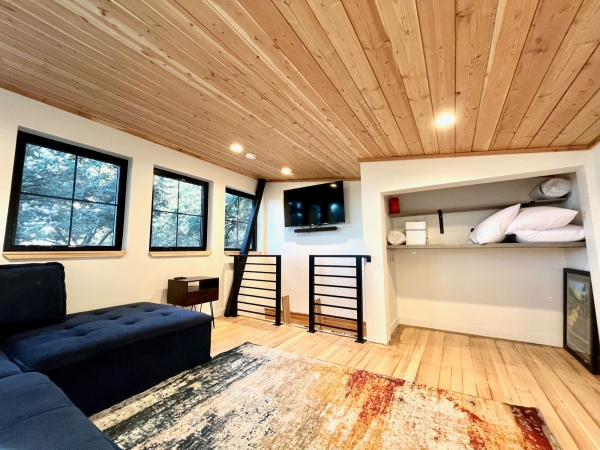 Most people call to mind a childrens’ play structure when they think of a treehouse, however there is a growing movement of construction of livable treehouses as long-term dwellings that is similar to the tiny house movement. Due to housing prices, changes in the economy, and a lack of inventory, treehouse living is growing in popularity as a housing option. Breaking the mold from traditional housing to a treehouse can be highly beneficial but also has its challenges, and there are a number of things to consider.
Most people call to mind a childrens’ play structure when they think of a treehouse, however there is a growing movement of construction of livable treehouses as long-term dwellings that is similar to the tiny house movement. Due to housing prices, changes in the economy, and a lack of inventory, treehouse living is growing in popularity as a housing option. Breaking the mold from traditional housing to a treehouse can be highly beneficial but also has its challenges, and there are a number of things to consider.
Why Build a Treehouse?
Although it may not be the most common living style, a custom designed treehouse can encourage play, fuel the imagination, and inspire wonder. You won’t find another form of housing that is so integrated with nature. Living amongst the trees can help you feel closer to nature and provide peace and quiet, more inner calm, and a smaller environmental impact than a traditional home. A treehouse, much a like a tiny house, has a far lower cost of upkeep than a typical house. Treehouses are always much smaller and by minimizing overall living space, it will require less gas, electricity and water to stay comfortable, even through changing seasons.
Treehouse dwellers can also take additional steps to reduce living costs, such as installing solar panels to reduce reliance on the power grid, insulate outer walls to minimize power needs to heating and cooling, and installing rainwater tanks to improve water efficiency.
Can I Live in a Treehouse?
Though it’s not yet hugely popular, you’ll find that there are a number of people worldwide who live in treehouses – if they can do it, so can you! If you own the land that your treehouse is built on and own the treehouse itself, then yes! You should also gain the proper permits and seek local government approval before building a treehouse on your property. It’s a good idea to contact an architect to discuss design and development needs, help you with planning and budgeting and to help acquire needed materials and possibly also contractors.
 What are the limitations of living in a Treehouse?
What are the limitations of living in a Treehouse?
The most obvious is that a house of this size affords only limited space, and will likely be far less than you are accustomed to. You can’t expect an abundance of storage either, so you’ll have to make arrangements for those holiday decorations to be stored elsewhere. You’ll also be limited on living and leisure space, so although you won’t have the option for something like a home gym, you will be close to the outdoors and can always expand outside to enjoy a meal in a forest setting or go for a run in nature.
On the flip side, this limited space can force its occupant to minimize their lifestyle and simplify overall. This can also mean less money spent in furnishings and belongings.
Making Income from a Treehouse
Average housing prices have skyrocketed nationwide in recent years, and many homeowners are looking for ways to get out of the substantial debt associated with mortgages. With a lower cost to design and build, less materials needed for construction, and lowered utility bills, owning and living in a treehouse can afford opportunities for debt-free living.
Treehouses are also gaining popularity as vacation homes, weekend getaways and boutique hotel rooms on Air BNB and VRBO. A search for treehouses on these vacation rental sites will yield some very interesting options, and treehouse owners can make a healthy side income from putting their treehouse on the short-term rental market.
Before you make the leap to treehouse living, try renting a treehouse for a couple of weeks to see how it suits you. If you make the decision to move to treehouse living, the next step is to start planning and designing. The design will be of utmost importance to make sure that your structure is safe and meets local building requirements.
Contact Root Architecture to set up a consultation to plan out your dream treehouse, and take a look at one of our recently constructed treehouses.

